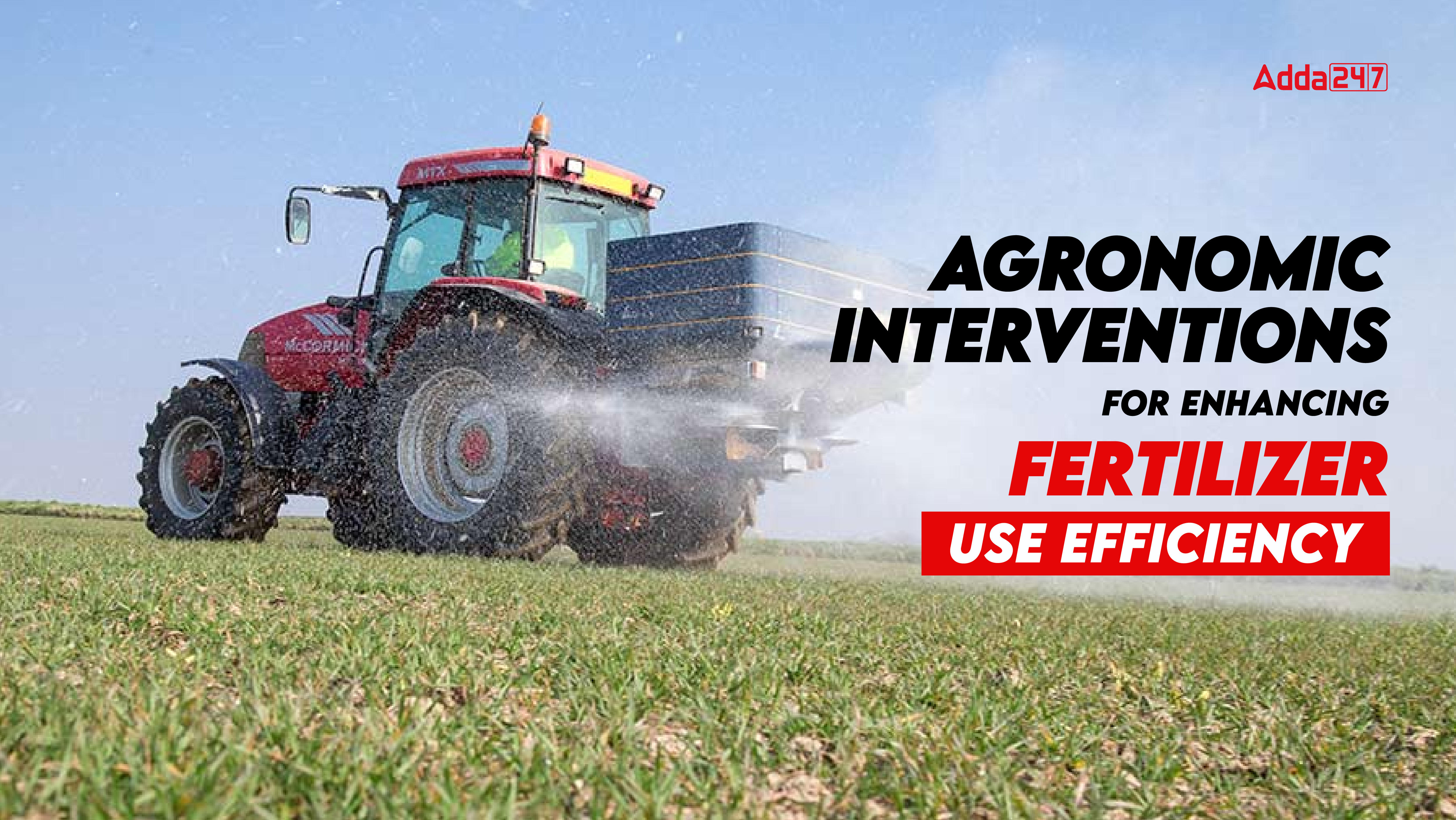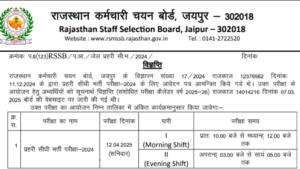Agronomic interventions are important in maximizing Fertilizer Use Efficiency (FUE), essential for sustainable agriculture. These measures include selecting optimal fertilizer sources, precise application rates through diagnostic techniques, balanced fertilization practices, integrated nutrient management, and efficient utilization of residual nutrients. By implementing these strategies, farmers can enhance crop productivity while minimizing environmental impact and resource wastage. Let’s learn the agronomic measures to improve the Fertilizer use efficiency (FUE).
Agronomic Interventions For Enhancing Fertilizer Use Efficiency FUE
Agronomic interventions enhance Fertilizer Use Efficiency (FUE), with a range of practices aimed at maximizing nutrient uptake by crops. From selecting the right type and amount of fertilizer to integrating organic and inorganic nutrient sources, and utilizing residual nutrients effectively, these strategies not only improve agricultural productivity but also promote soil health and environmental stewardship. This holistic approach to nutrient management is crucial in meeting global food demand while conserving resources for future generations. The following are the agronomic measures to improve the Fertilizer use efficiency (FUE).
- Using the best fertilizer source
- Using adequate rate & diagnostic techniques
- Usage of balanced fertilization
- Integrated nutrient management
- Utilization of residual nutrients
Let’s elaborate on each point:
Using the best fertilizer source
This involves selecting the appropriate type of fertilizer that matches the nutrient requirements of the crop and the soil conditions. For instance, choosing between nitrogen-based, phosphorus-based, or potassium-based fertilizers based on soil test results and crop needs. Identification of the best source of fertilizer is a prerequisite for better crop production. The source of fertilizer depends on crop and variety, climatic and soil conditions, availability of fertilizer, etc.
- Nitrogen: Ammoniacal or Nitrate
- Phosphorus: Water soluble or Citrate soluble
- Potassium: Muriate of potashSulphur: Sulphate or Elemental S
- Multinutrient fertilizers: MAP, DAP, SSP, Nitrophosphates
- Multi-nutrient mixtures: Several combinations of NPK
- Fortified fertilizers: Neem-coated urea, Zincated urea, Boronated SSP, NPKS
mix.
Using adequate rate & diagnostic techniques
Applying the right amount of fertilizer is crucial to optimize plant uptake and minimize losses. Diagnostic techniques such as soil testing and plant tissue analysis help determine nutrient deficiencies and guide precise fertilizer application rates. The fertilizer recommendation must be in adequate quantity to meet the demand of the crop at any point of growth. The fertilizer supply is made by diagnosing its requirement by any of the following methods.
- State-recommended generalized fertilizer dose or blanket recommendation
- Soil-test-based fertilizer recommendations
- Soil-test crop response-based recommendation
- Plant analysis for diagnosing nutrient deficiencies
- Chlorophyll meter and Leaf color charts, etc.
Usage of balanced fertilization
Balanced fertilization refers to applying nutrients in the correct proportion relative to each other and to the crop’s requirements. This approach ensures that all essential nutrients are available in adequate amounts for optimal plant growth and development. Balanced fertilization includes an adequate supply of all essential nutrients, the proper
method of application, the right time of application, and nutrient interrelationships.
- Adequate supply of all essential nutrients: Due to more concentration and
application of primary nutrients (NPK), soils developed deficiency symptoms for
secondary and micro-nutrients. Hence, ignored elements must be added to the
NPK (may be in minor quantity) to get higher yields in crops. Experimental results show that about 20-25 kg of micro-nutrient application or two foliar sprays
increase the yield of crops by up to 20%. - Proper method: N and K can be applied as broadcasting and band placement. Water soluble P fertilizers are preferred to apply as band placement in neutral & alkaline soils. Citrate-soluble P fertilizers are applied as a broadcast method in acidic soils. Sulfate forms of S fertilizers are applied as broadcasting or band placement, whereas, elemental S and pyrite are applied as broadcasting methods. Micronutrients are applied in minor quantities as foliar sprays and water-soluble fertilizers are applied in fertigation.
- Right time: (according to the physiology of crop)
• Upland crops – 2 splits (seeding, 3-5 weeks after first dose)
• Flooded rice – 3 splits (Transplanting, 3 and 6 weeks after first dose) - Nutrient interrelationships: The antagonistic nature of fertilizers is to be considered while applying them to the soil. Some of the fertilizer applications in excess, cause loss of yield and quality of crops. Ex. Application of excessive 120 kg P ha-1 created an imbalance and reduced the seed and oil yields in soybeans compared to 80 kg P ha-1
Integrated nutrient management
Integrated Nutrient Management (INM) involves combining organic and inorganic sources of nutrients along with biological inputs to enhance nutrient availability and improve soil health.
- This approach promotes sustainability and efficiency in nutrient use.
- Organic manures, crop residues, green manures, bio-fertilizers, etc. are to be blended in the right manner along with inorganic fertilizers to meet the crop demand.
- All the possible and available organic sources are to be utilized efficiently to reduce the usage of inorganic fertilizers.
Utilization of residual nutrients
Residual nutrients are those remaining in the soil after a previous crop or fertilizer application. Efficiently utilizing these residual nutrients by selecting crops that can make use of them reduces the need for additional fertilizers and improves overall Fertilizer Use Efficiency. Some of the strategies to utilize the crop residues efficiently are,
- Knowledge of climatic conditions & carry-over effects of residues.
- Blending rightly on cereal-legume rotations
- Mixing shallow-deep-rooted crop rotations




 Rajasthan Jail Prahari Admit Card 2025 a...
Rajasthan Jail Prahari Admit Card 2025 a...
 Odisha High Court ASO Exam Date 2025 Out...
Odisha High Court ASO Exam Date 2025 Out...
 AIIMS NORCET 8 Result 2025 Out, Download...
AIIMS NORCET 8 Result 2025 Out, Download...


 Adda247 Job portal has complete information about all Sarkari Jobs and Naukri Alerts, its latest recruitment notifications, from all state and national level jobs and their updates.
Adda247 Job portal has complete information about all Sarkari Jobs and Naukri Alerts, its latest recruitment notifications, from all state and national level jobs and their updates.